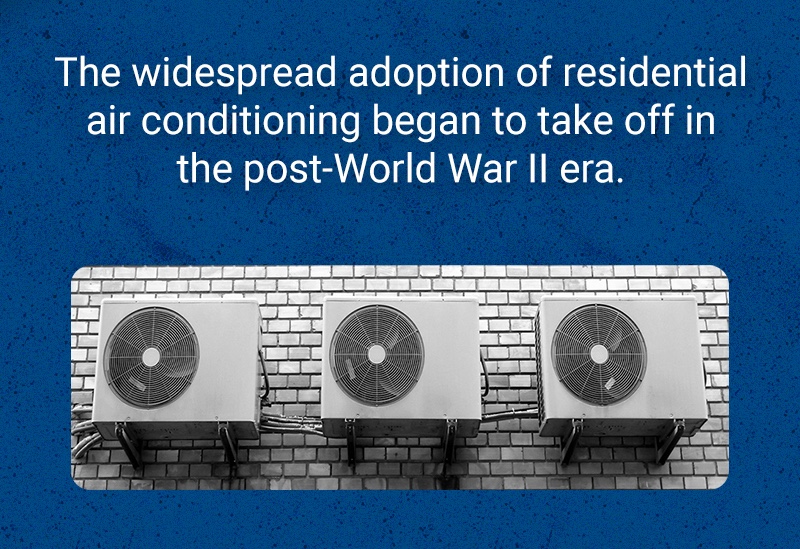
Before the 1950s, air conditioning was primarily used in industrial applications and public spaces like movie theaters and luxury hotels. However, with the economic boom following World War II, there was a significant increase in the standard of living in the United States, and many people could afford more comfortable homes.
In 1953, a pivotal year for residential cooling, air conditioning units became more affordable and accessible to the middle class. This was largely due to advancements in technology and mass production techniques. The invention of the modern air conditioner in 1902 played a significant role in the development and distribution of residential air conditioning systems.
The adoption of air conditioning in homes changed the way people lived, especially in the warmer southern states of the U.S., where hot spring and summer temperatures had previously made life uncomfortable. Air conditioning allowed for better control of indoor climates, leading to a significant shift in building design, including the use of larger windows and less natural ventilation, as well as the growth of suburban areas where homes could be built with central air systems in mind.
The spread of air conditioning also had a profound impact on productivity and the economy, as it allowed for more comfortable working conditions in offices and factories. It also contributed to significant demographic shifts, as regions that were once considered too hot for comfortable living became more attractive for settlement and business.

